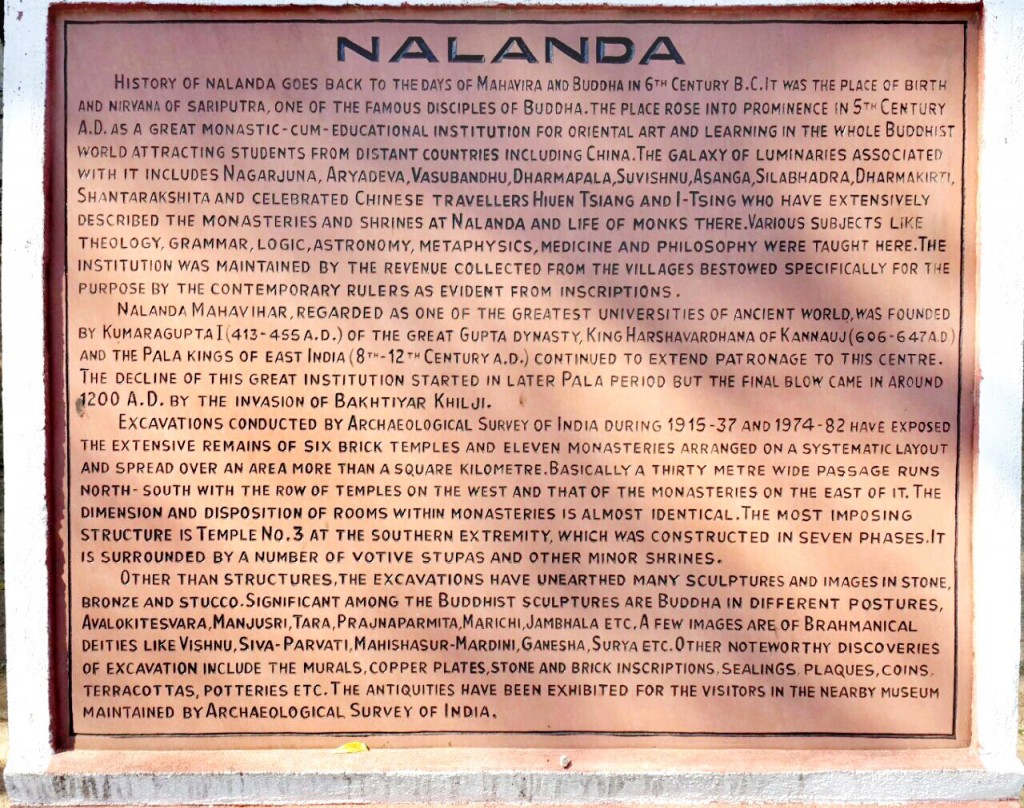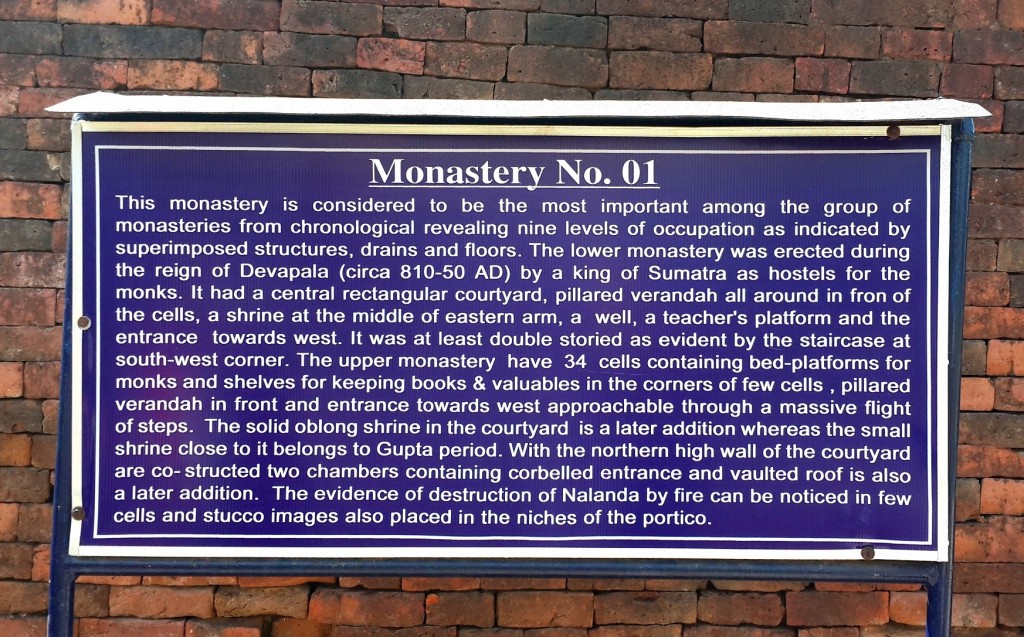“History of Nalanda goes back to the days of Mahavira and Buddha in 6th Century B.C. It was the place of birth and Nirvana of Sariputra, one of the famous disciples of Buddha. The place rose into prominence in 5th Century A.D as a great monastic-cum-educational institution for oriental art and learning in the whole Buddhist world attracting students from distant countries including China. The galaxy of luminaries associated with it includes Nagarjuna, Aryadeva, Vasubandhu, Dharmapala, Suvishnu, Asanga, Silabhadra, Dharmakirti, Shantarakshita and celebrated Chinese travellers Xuan Zang and Yi Jing who have extensively described the monasteries and shrines at Nalanda and life of monks there. Various subjects like theology, grammar, logic, astronomy, metaphysics, medicine and philosophy were taught here. The institution was maintained by the revenue collected from the villages bestowed specifically for the purpose by the contemporary rulers as evident from inscriptions.”
“Nalanda Mahavihar, regarded as one of the greatest universities of ancient world, was founded by Kumaragupta I (413-455 A.D.) of the great Gupta dynasty, King
Harshavardhana of Kannauj (606-647 A.D) and the Pala Kings of East India (8th -12th Century A.D.) continued to extend patronage to this centre. The decline of this great institution started in later Pala period but the final blow came in around 1200 A.D. by the invasion of Bakhtiyar Khilji.”
“Excavations conducted by Archaeological Survey of India during 1915-1937 and 1974-1982 have exposed the extensive remains of six brick temples and eleven monasteries arranged on a systematic layout and spread over an area more than a square kilometre. Basically a thirty metre wide passage runs North-South with the row of temples on the west and that of the monasteries on the east of it. The dimension and disposition of rooms within monasteries is almost identical. The most imposing structure is Temple No. 3 at the Southern extremity, which was constructed in seven phases. It is surrounded by a number of votive stupas and other minor shrines.”
“Other than structures, the excavations have unearthed many sculptures and images in stone, bronze and stucco. Significant among the Buddhist sculptures are Buddha in different postures, Avalokitesvara, Manjusri, Tara, Prajnaparamita, Marichi, Jambhala, etc. A few images are of Brahmanical deities like Vishnu, Siva-Parvati, Mahishasur-Mardini, Ganesha, Surya, etc. Other noteworthy discoveries of excavation include the murals, copper plates, stone and brick inscriptions, sealings, plaques, coins, terracottas, potteries, etc. The antiquities have been exhibited for the visitors in the nearby museum maintained by Archaeological Survey of India.”
Monastery No. 01
“This monastery is considered to be the most important among the group of monasteries from chronological revealing nine levels of occupation as indicated by superimposed structures, drains and floors. The lower monastery was erected during the reign of Devapala (circa 810-850 A.D.) by a king of Sumatra as hostels for the monks. It had a central rectangular courtyard, pillared verandah all around in front of the cells, a shrine at the middle of eastern arm, a well, a teacher’s platform and the entrance towards west. It was at least double storied as evident by the staircase at South-West corner. The upper monastery have 34 cells containing bed-platforms for monks and shelves for keeping books and valuables in the corners of few cells, pillared verandah in front and entrance towards West approachable through a massive flight of steps. The solid oblong shrine in the courtyard is a later addition whereas the small shrine close to it belongs to Gupta period. With the Northern high wall of the courtyard are co-structured two chambers containing corbelled entrance and vaulted roof is also a later addition. The evidence of destruction of Nalanda by fire can be noticed in few cells and stucco images also placed in the niches of the portico.”
***
Courtesy: Nalanda Mahavihara, India
Archaeological Survey of India
 Bahasa
Bahasa
 October 26th, 2015
October 26th, 2015  Admin
Admin 

 Posted in
Posted in